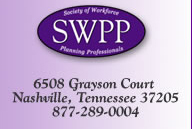|
This article details the results of the most recent SWPP quarterly survey on critical workforce planning topics. In this survey, which focused on the holiday scheduling, almost 150 call center professionals representing a wide variety of industries participated and provided insight into numerous workforce planning questions. Participant Profile Thirty-six percent of the participants were from large call center operations with over 500 seats, followed by 18% with 100-200 agents. Thirteen percent had less than 100 agents. All types of call center operations were represented in the study, with the biggest percentages representing financial, insurance, and utility centers. Determining Who Works on a Holiday The survey respondents were asked how they determine who works on a holiday. Thirty percent of the respondents said that they ask for volunteers or just schedule the number of agents needed. However, the largest percentage (40%) said they did neither of these things. Answers included that they ask for volunteers and then schedule the rest either by seniority or performance, use rotation, outsource calls on holidays, or the centers were closed on holidays so no scheduling was needed.
Call Volume After Holidays Seventy-seven percent of the participants said they experience busier than normal call volume after holidays. Twenty-percent said it depended on the holiday, and only three percent said they did not.
Number of Busy Days Following a Holiday Of the 77% that experience busy days following a holiday, the largest group (42%) said this busy period lasted for two days. Thirty-six percent said only the day after was busier than normal, while 16% said that three days after the holiday were busy.
Call Volume Prior to a Holiday Over half the respondents said that call volume is lighter prior to a holiday. However, 23% reported no change, and 20% said call volume is heavier.
Types of Schedules Used Around Holidays Almost an equal amount of respondents said they use more full-day schedules and fewer partial-day schedules (23%) as said that they use more partial-day schedules and fewer full-day schedules (22%). The majority selected Other as their answer, and responses included that they don’t change the types of schedules they use, offer more time off, run fewer schedules in general, or schedule more off-phone activities during this time.
Impact of Current Holiday Scheduling Plan Forty-five percent said that their current holiday scheduling plan has had a positive impact on the agents. An almost equal amount (43%) said there is no impact on their agents, and only 12% said that their agents are unhappy with the current holiday scheduling plan.
Impact of Holiday on Schedule Adherence One question we were really interested in was whether or not working on a holiday had an impact on agent schedule adherence. And the good news is that 65% said that there is no impact on schedule adherence from working on a holiday, as well as 20% saying that adherence is higher than usual on a holiday. Only 15% said they see a negative impact on schedule adherence on a holiday.
Shrinkage on Holidays More good news here – 64% said that shrinkage is not higher on a holiday. Twenty-eight percent said that they do experience higher than normal shrinkage on a holiday, while eight percent answered that they don’t know the impact.
Don’t forget to complete the SWPP Winter Survey online at www.swpp.org. Copyright ©2008 Society of Workforce Planning Professionals. All rights reserved. |
||








